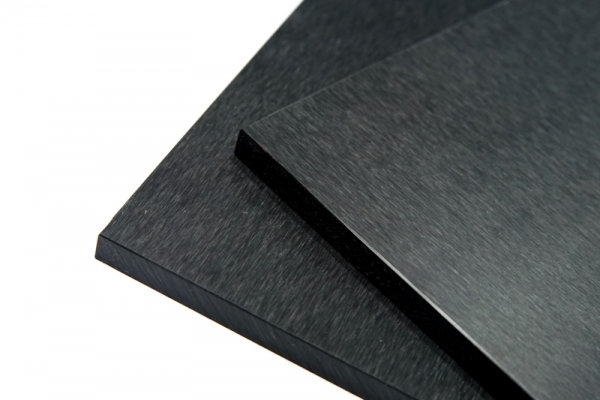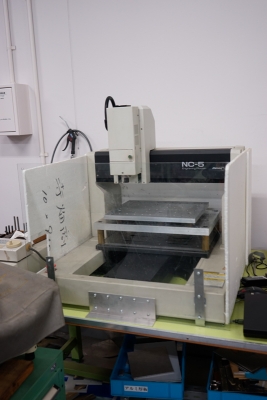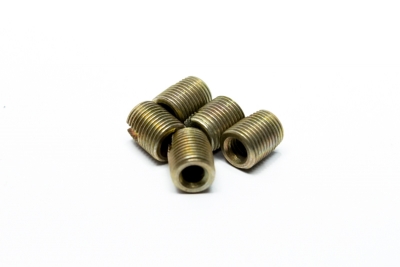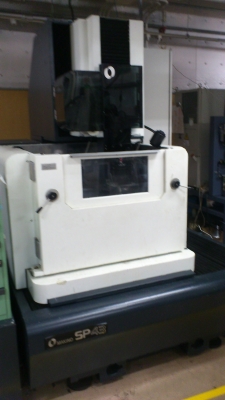Fabrication
This section, divided into the following three parts, introduces a method to fabricate the actuation system.
- Machining and Printing Parts
Introduces some machining methods to make custom parts for the pump - Assembly of the Pump
Introduces the way of assembly of the pump step by step - Assembly of the System
Introduces the way of assembly of McKibben actuators and connecting components.
Bill of Materials
We provide here a BOM for the pump. Most of the parts were purchased through Japanese online stores. You can replace unavailable parts with equivalent parts that you can buy.
Parts
| Parts | Manufacturer's number or specification |
Custom parts |
Material | Qty |
| DC motor | Maxon DC motor 273752 | 1 | ||
| Rotary encoder | CUI AMT103 | 1 | ||
| Oil seal mounting | Milling | POM 7mm | 1 | |
| O-ring | NOK 1A S-20 | 1 | ||
| Oil seal | NOK SC6167 | 1 | ||
| Low profile cap screw | M2.5x6mm | 6 | ||
| Motor mounting | Milling | POM 15mm | 1 | |
| M2.5 insert screw | Ensat 302 000 025 | 5 | ||
| M3 insert screw | Ensat 302 000 030 | 2 | ||
| Cover side plate | Wire EDM | Oil-less slide plate 2.5mm | 1 | |
| Rotor casing | Milling | Aluminium | 1 | |
| O-ring | NOK 1A S29 | 1 | ||
| Shim ring | Wire EDM | Stainless steel 1mm | 1 | |
| Bottom slide plate | Wire EDM | Oil-less slide plate 2.5mm | 1 | |
| Thin bearing | NMB DDA-2520 | 2 | ||
| Outer rotor | EDM | Stainless steel 9.5mm | 1 | |
| Inner rotor | EDM | Stainless steel 9.5mm | 1 | |
| Stainless steel spacer | Hirosugi CU-2616PH | 3 | ||
| Stainless steel cap screw | M2.5x20mm | 2 | ||
| Outlet casing | 3D printing | Nylon | 1 | |
| Tube fitting (inner hex, straight type) | PISCO POC8-01 | 2 | ||
| Fitting (plug type) | PISCO SLP-M5 | 1 | ||
| Fitting (barb straight type) | PISCO SLC-0640-M5 | 1 | ||
| O-ring | NOK 1A SS-145 | 2 | ||
| Stainless steel cap screw | M2.5x25mm | 3 | ||
| /unit | ||||
| Braided outer mesh | Lay flat width: 12mm | 1 | ||
| Silicone tube |
Outside diameter: 10mm |
1 | ||
| Tube fittings (Unequal plug-in, straight) | PISCO PGJ10-8 | 1 | ||
| Tube fittings (Unequal plug-in, straight) | PISCO PGJ10-6 | 1 | ||
| Plastic hose clamps | Hellermann Tyton SNP-6 | 2 | ||
| Cable ties | 4 | |||
| Tube fitting (Cap type) | PISCO PPF6 | 1 |
Tools and Consumable
Other than the previous list, the following tools will be needed.
- Silicone oil
- Denatured alcohol
- M5 tap
- Rc 1/8 (short type) tap
Machines
- CNC milling machine
- Wire EDM
Machining and Printing Parts
Some customized parts need to be fabricated in order to make a pump. The design requires three techniques of lab-level fabrication, CNC machining, 3D printing and wire Electrical Discharge Machining (EDM).
CNC Machining
POM
POM is an engineering plastic used in a wide range of industries. Machining this material is very easy and the material has enough strength. The team used a CNC milling machine to make some parts.
|
POM plates |
CNC milling machine we used (Mimaki NC-5) |
In the design of the pump, CNC machining was used to make following two parts .(Download CAD data)
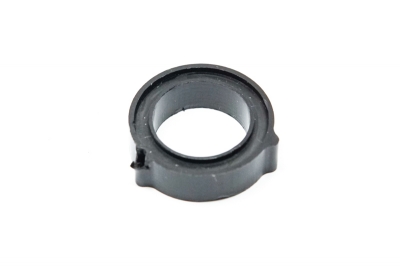 |
Oil Seal CasingPOM plate (Thickness: 7mm) |
 |
Motor MountingPOM plate (Thickness: 15mm) Install five M2.5 insert screws (Ensat 302 000 025) on the side and two M3 insert screws (Ensat 302 000 030) on the bottom
|
Aluminum
The team used the fabrication service because machining power is required compared to POM parts. (Download CAD data)
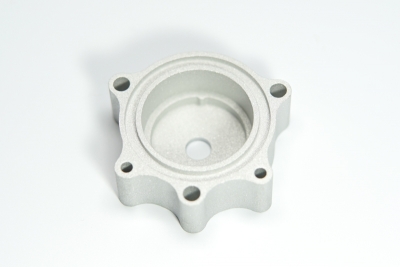 |
Rotor CasingAluminum A5052 Finish: sand blast |
3D printing
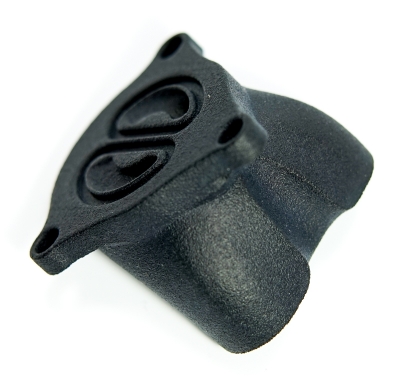 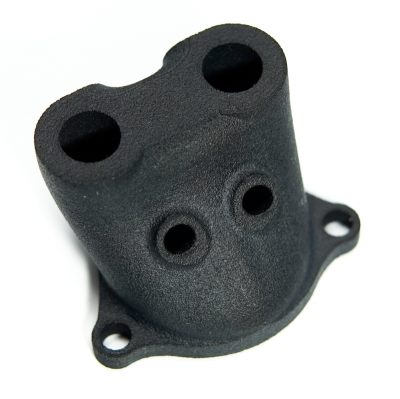 |
Outlet CasingNylon 3D print The surface is colored with black dye. |
Wire EDM
|
We used wire EDM for high precision machining of stainless steel and slide plates because wire EDM can cut the metal even if it is really hard. (Download CAD data) |
Wire EDM we used (Makino SP43) |
Stainless steel
Stainless steel is suitable as a material of rotors. However, stainless steel is a difficult material for CNC machining. Precise machining is also required for rotors. Wire EDM is one of the best choices for rotor machining.
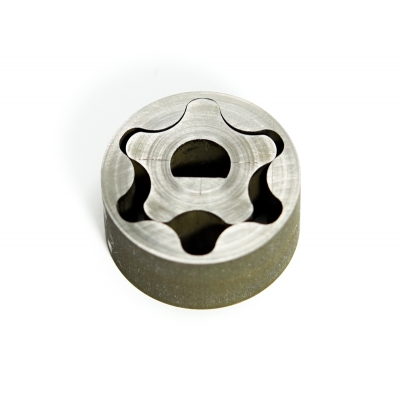 |
Out rotor and inner rotorStainless steel SUS303 plate (Thickness: 9.5mm) |
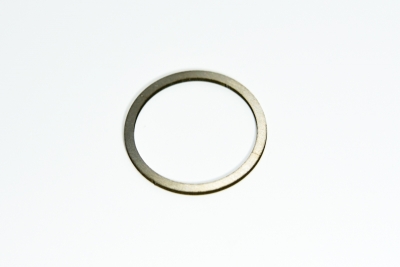 |
Shim ringStainless steel plate (Thickness: 1mm) |
Oil-less Slide Plate (DAIDYNE DDK05)
To reduce the friction between rotors and casing, we set oil-less slide plates both sides of the rotors.
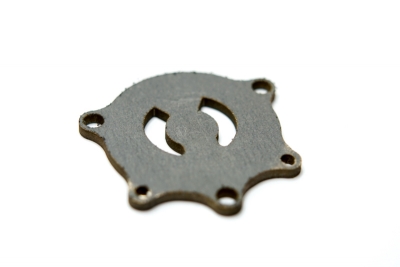 |
Cover slide plateDAIDYNE DDK05 slide plate (Thickness: 2.5mm) |
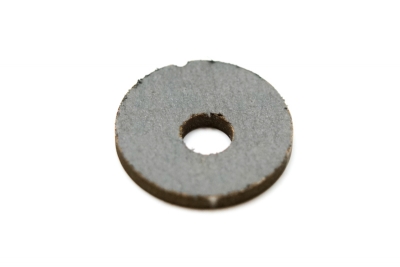 |
Bottom slide plateDAIDYNE DDK05 slide plate (Thickness: 2.5mm) |
Assembly of the Pump
A key component of this system is a specially designed rotary pump. Though the pump is designed with the concept of easy fabrication, sometimes you have to pay attention to the assembly of some parts. Be careful, for accuracy of this assembly may affect the performance of the pump.
Step1: Prepare a Motor
The team used a Maxon 273752 DC motor (15V 90W). You can make smaller pumps using small motors if you find a good way to seal a small diameter shaft.

 |
You need to file a flat surface on the tip of the shaft. |
 |
If you need a rotary encoder, attach the other side of the main output shaft. We installed a CUI AMT103. |
Step2: Assemble the Motor Mount and Shaft Sealing

Parts List and Assembly
 |
|
 |
Motor mounting with insert screws |
 |
Attach the mounting on the motor. |
 |
You need a wrench to fit the cap screws. |
 |
Use a wrench, tighten cap screws. |
 |
|
 |
Use an oil seal (Outer:16mm Inner:7mm). |
 |
Oil seal mounting |
 |
Push the oil seal into the hole of the mounting. |
 |
Oil seal should be inserted all the way down into the hole. |
 |
Install an O-ring. |
 |
Spread silicone oil on the shaft. |
 |
Spread silicone oil also on the lip of the oil seal. |
 |
Insert the oil seal mounting into the hole of the motor mounting. |
 |
The seal mounting would be tightly fitted to the hole. |
Step3: Assemble a pump box

Parts List and Assembly
 |
|
 |
Outer rotor and inner rotor were machined by a wire EDM. |
 |
Using a jeweler's file, smooth down the burrs on the side. |
 |
|
 |
|
 |
Using sandpaper (#400), sand the surface until smooth. |
 |
Using the jeweler's file, smooth down the burrs on the side. |
 |
Using the jeweler's file, smooth down the burrs on the side as well. |
 |
Using sandpaper (#180 and #400), sand the surface until smooth. |
 |
|
 |
Using sandpaper (#180 and #400), sand the surface until smooth. |
 |
|
 |
Using a router bit, remove any burrs from the center hole. |
 |
Using sandpaper (#180 and #400), sand the surface of the inside until smooth. |
 |
|
 |
Place the slide plate into the pump casing. |
 |
|
 |
Place the first bearing into the pump casing. |
 |
Push the bearing down carefully all the way making sure it is straight. |
 |
Place the second bearing into the pump casing. |
 |
Push the bearing down until it touches the first bearing. |
 |
Place the outer rotor into the bearings. |
 |
Make sure that the outer rotor touches the surface of the bottom slide plate. |
 |
Place a shim ring. |
 |
Place an O-ring. |
 |
|
 |
Push the casing into the motor mounting until it touches the surface of the mounting. |
 |
|
 |
Insert the inner rotor into the outer rotor and D shaped shaft. |
 |
Step4: Assemble the outlet casing

Parts list and Assembly
 |
Use three stainless steel spacers (Hirosugi CU-2616PH Outer:3.8mm Inner:2.8mm). |
 |
Install spacers. |
 |
Put the cover slide plate on the casing. |
 |
Tighten stainless steel cap screws (M2.5x20mm). |
 |
3D printed outlet casing |
 |
To make a flat on the mounting surface, sand the surface until smooth. |
 |
Remove dust. |
 |
|
 |
You need two kinds of taps, M5 and Rc 1/8 (short type). |
 |
Tap the two small holes with a M5 tap making sure it is straight. |
 |
Tap the two big holes with a Rc1/8 tap making sure it is straight. |
 |
|
 |
|
 |
Install the straight type fitting. |
 |
Install the plug on the other one. |
 |
Using a large wrench, tighten the fittings. |
 |
Place o-rings. |
 |
Put the outlet casing onto the rotor casing. Tighten with three screws (M2.5x25mm). |
 |
|
Assembly of the System
Step1: Assemble McKibben actuators
As you know, the McKibben actuator is one of the most common traditional soft actuators. There are a lot of ways to make this actuator. The method we will introduce here is simple and useful to assemble using cheap commercial parts.
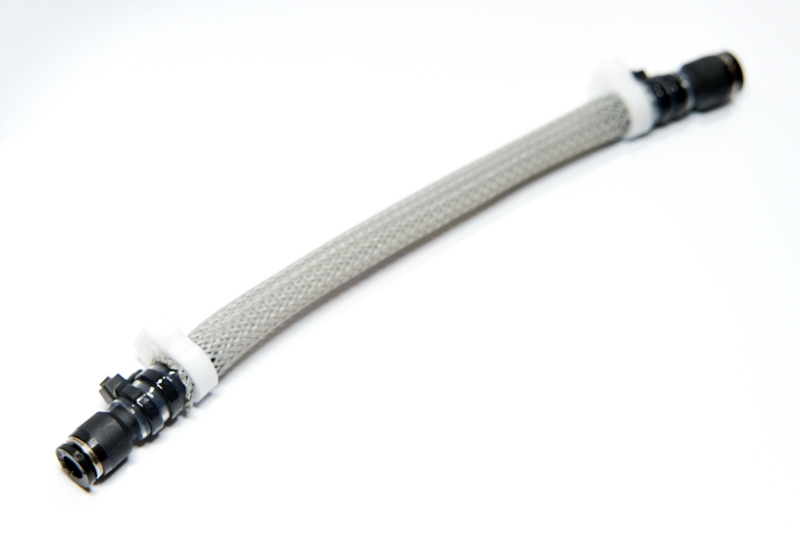
Parts list and Assembly
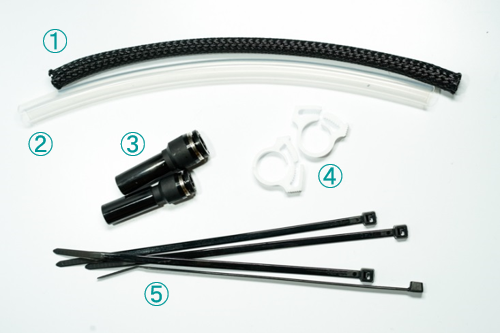 |
List
|
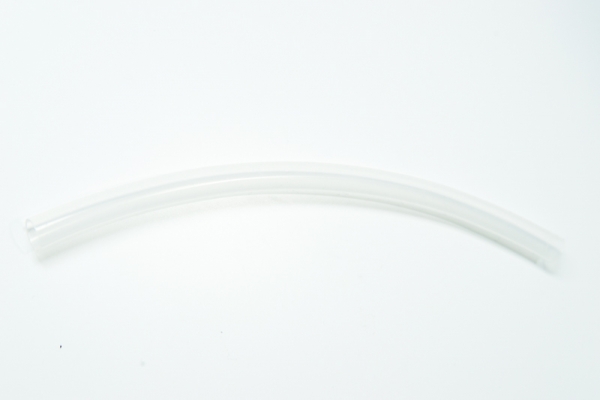 |
Cut the silicone tube down to 190mm Note: please adjust the length to fit your purpose. |
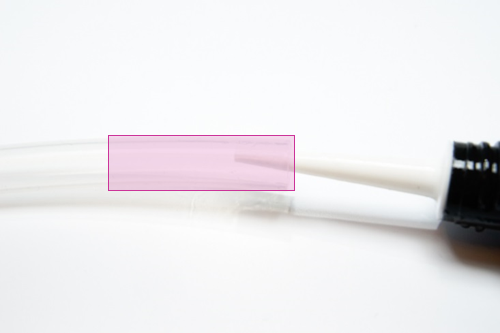 |
Spread the silicone oil inside the tube (highlighted area). |
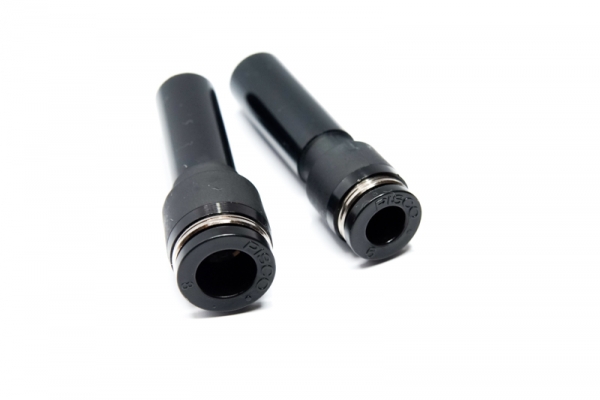 |
Φ8 and Φ6 tube fittings (unequal plug-in, straight type) |
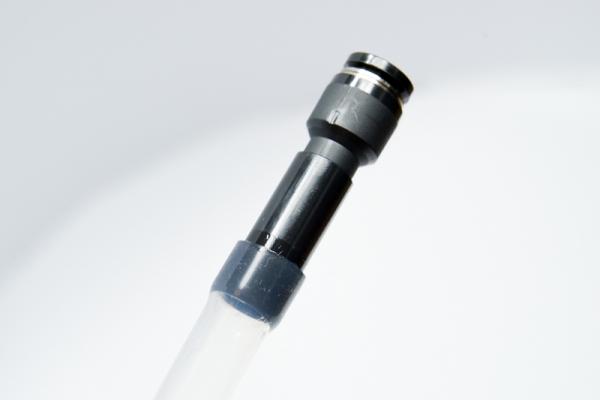 |
Carefully, insert the pipe of the tube fitting into the silicone tube. |
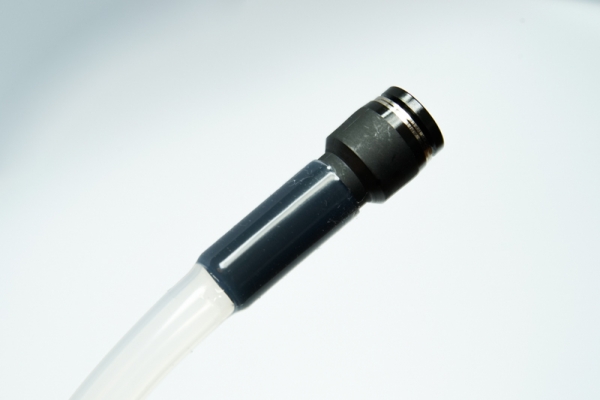 |
Insert the tube fitting all the way down into the silicone tube. |
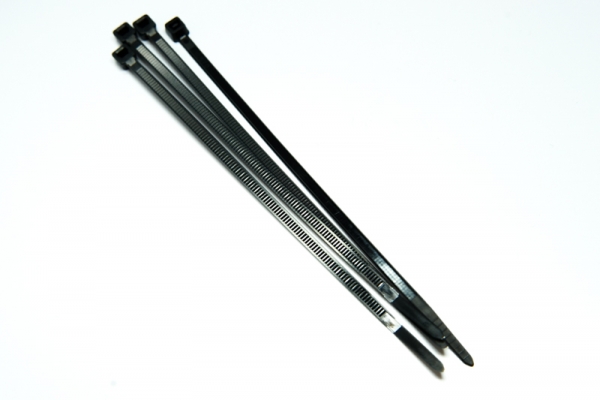 |
Four cable ties |
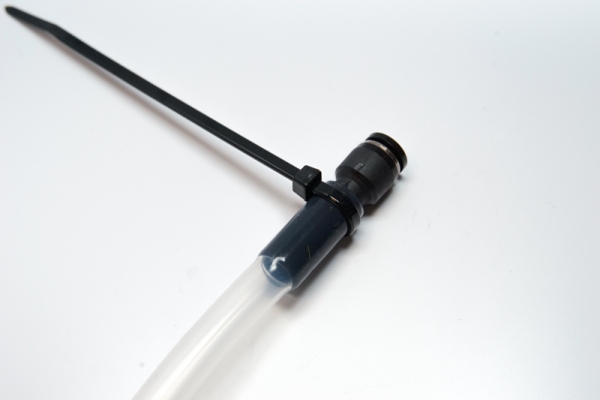 |
Tighten the cable tie around the silicone tube. |
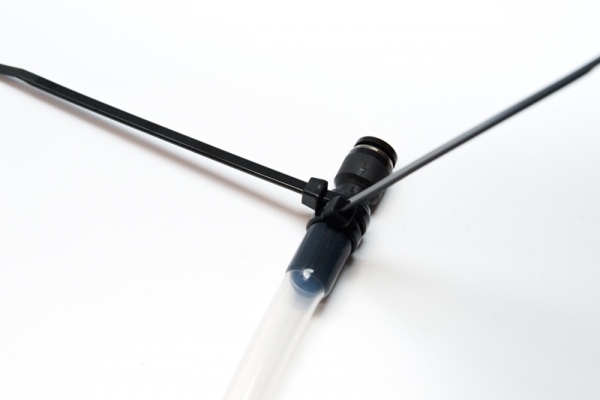 |
The second one is as well. |
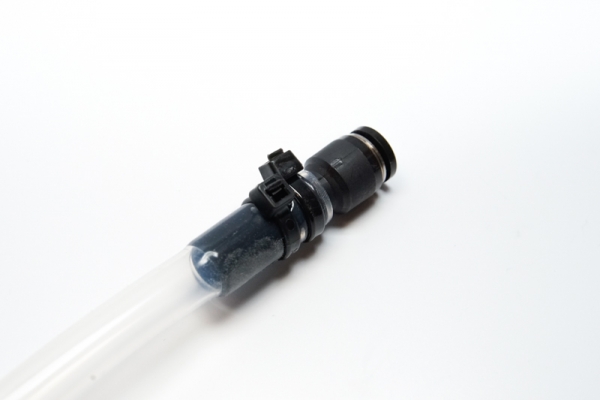 |
Cut the extra tie off. |
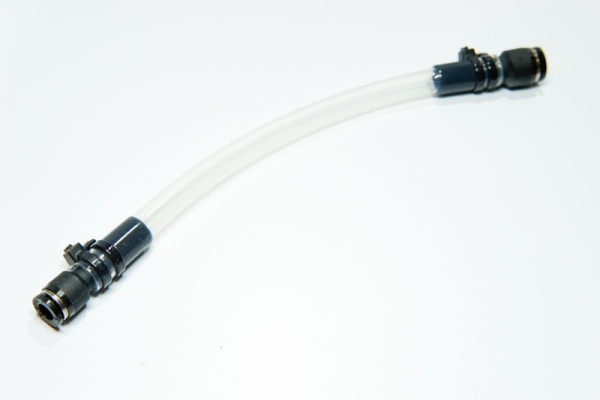 |
Do the same on the other side. |
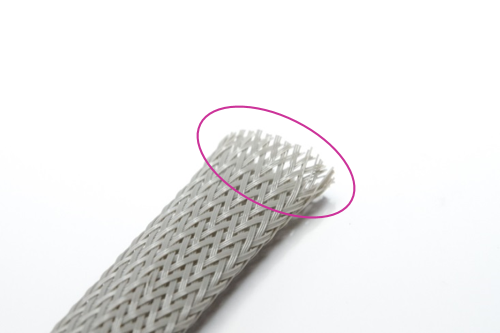 |
Cut the braided outer mesh down to 190mm. |
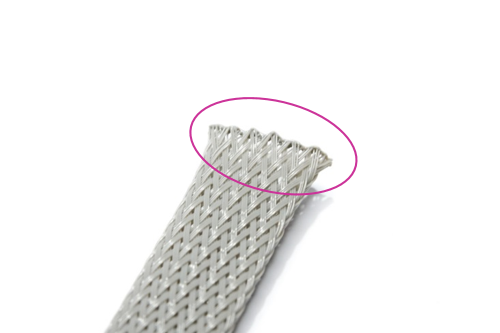 |
To prevent the mesh from getting frayed, melt the end of the strands using a flame. |
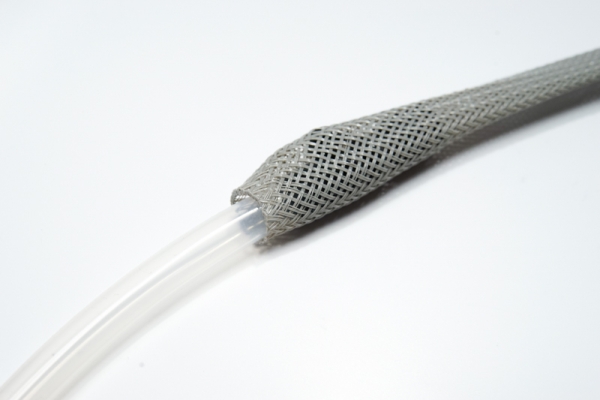 |
Put the silicone tube into the mesh. |
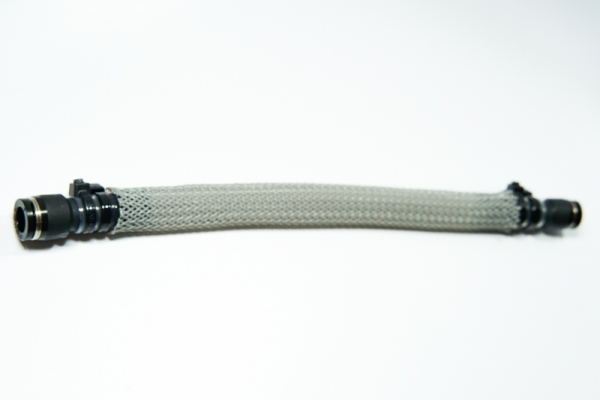 |
The tube should fit all the way into the mesh. |
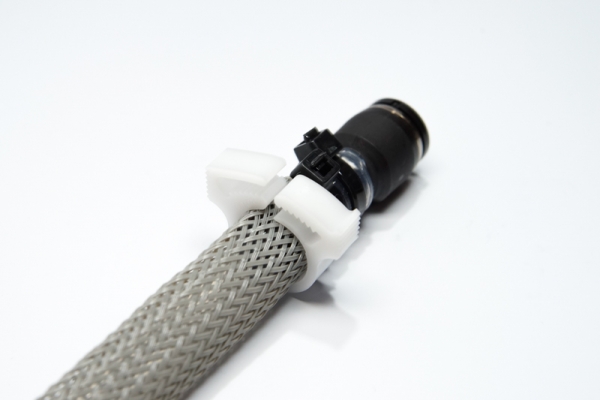 |
Tighten a plastic clamp around the end of the mesh. |
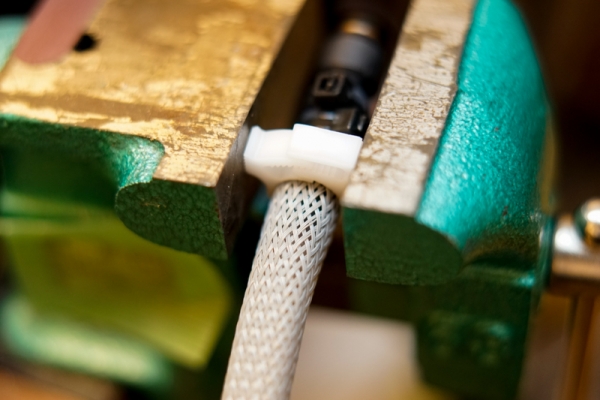 |
Using a vise, you need to fully close the clamp. |
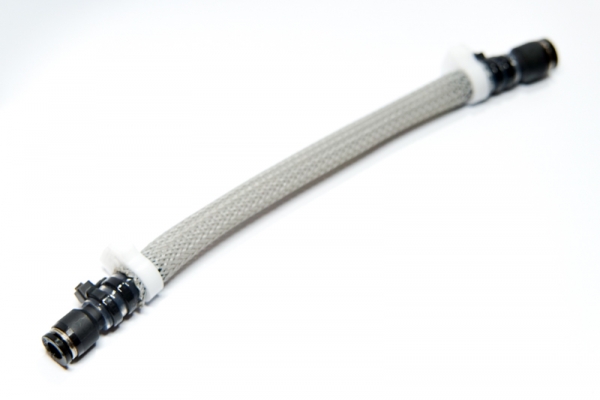 |
Clamp the other side in the same way. |
Step2: Connect the pump and McKibben actuators

Connect McKibben actuators and the pump using polyurethane tubing (outer: 8mm inner: 6mm). Cap the end of McKibben actuators using cap tube fitting (PISCO PPF6).
Step3: Fill the actuators with alcohol
You need to prepare denatured alcohol in a bucket.
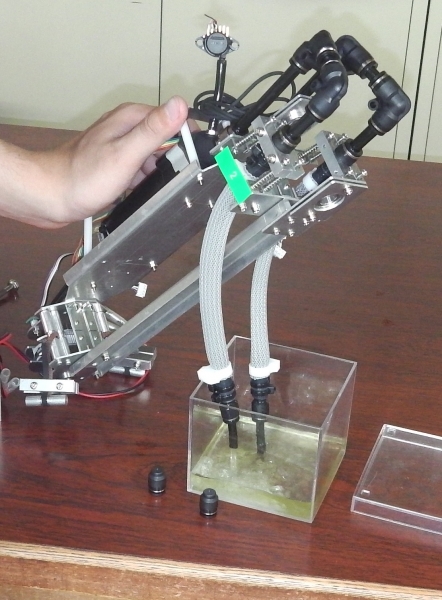 |
Start the pump and circulate alcohol to remove air. |
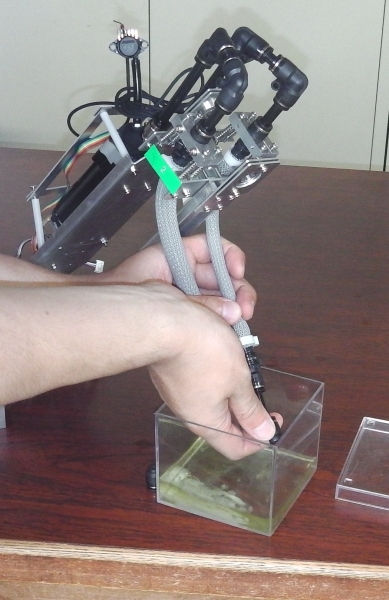 |
Cap the outlet with the cap tube fitting. |
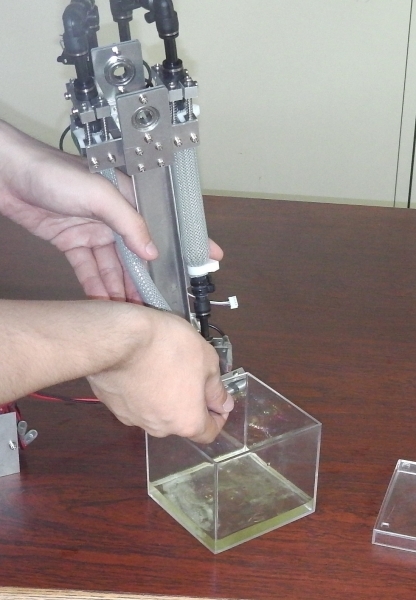 |
The capped side Mckibben actuator will be inflated. Then, cap the other side. |
